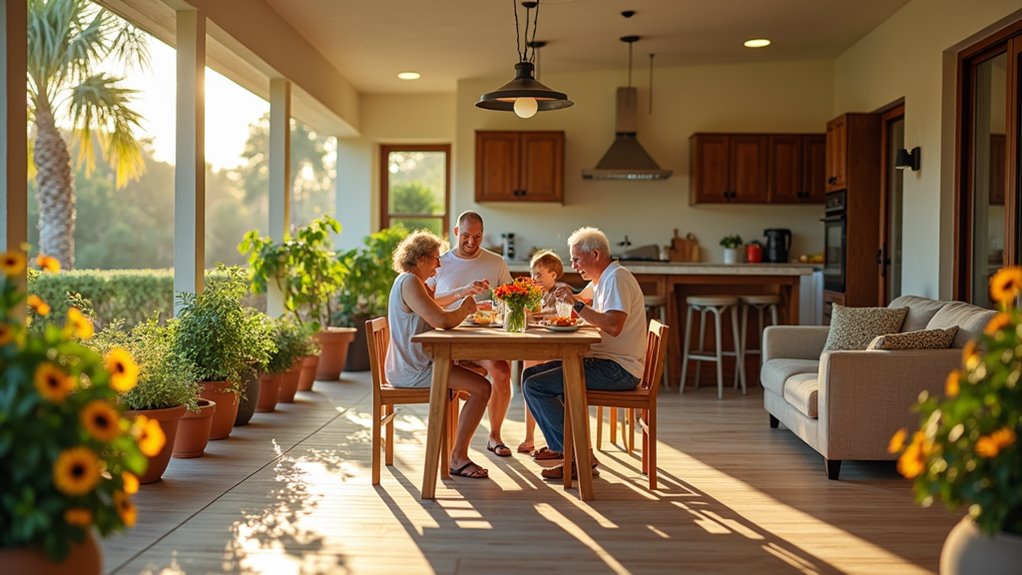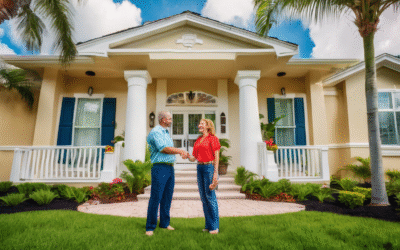Essential Insights on Multi-Generational Homes in FloridaKey Takeaways
- Over 20% of young adults in Florida live with parents, influenced by high housing costs and cultural traditions.
- Multi-generational homes provide financial benefits, including cost sharing and reduced living expenses for families facing economic pressures.
- Innovative home designs feature in-law suites, separate entrances, and open layouts to accommodate diverse family needs and foster interaction.
- Shared living arrangements enhance emotional support, reduce loneliness, and improve health outcomes through intergenerational caregiving and mentorship.
- Future trends indicate a growing demand for age-in-place solutions and flexible living spaces that address the needs of an aging population.
Understanding Multi-generational Living Trends in Florida
As Florida continues to experience demographic shifts, the trend of multi-generational living is becoming increasingly prominent, driven by a combination of economic pressures and cultural influences. Over 20% of adults aged 25-34 reside with their parents, a stark contrast to national trends. This is significantly influenced by high housing costs and cultural traditions, especially within Hispanic communities that favor extended family arrangements.
The higher shares of unaffordable housing further support this trend, as families seek to combine resources for mutual benefit. Additionally, the demand for housing accommodating multiple generations is reshaping market preferences as builders respond with cutting-edge housing designs, incorporating features like in-law suites and separate entrances. This evolving landscape reflects a growing acceptance of multi-generational living, fostering family unity and practical solutions to contemporary challenges.
The Impact of Economic Factors on Family Dynamics
Economic factors greatly influence family dynamics within multi-generational homes in Florida, primarily through housing affordability challenges and financial stress. The rising cost of living often forces families to adapt their living arrangements, which can affect personal independence and relational interactions. As economic pressures mount, the roles and responsibilities within these households may shift, leading to changes in family cohesion and support structures.
These economic pressures can create power imbalances, affecting decision-making and autonomy within relationships. The increasing prevalence of multi-generational households highlights the need for families to navigate these economic dynamics together.
Housing Affordability Challenges
Rising housing costs in Florida have compelled many families to reconsider traditional living arrangements, leading to a surge in multi-generational households. As of early 2024, the median single-family home price reached $411,600, while median rent soared to $1,555, creating significant affordability challenges. Approximately 36% of multi-generational home buyers cite cost savings as a primary motivation, highlighting the economic pressures faced by families.
Additionally, over 883,000 renter households below 60% of the area median income are burdened by excessive housing costs. This trend is especially pronounced among seniors, with over 346,000 households experiencing financial strain, prompting families to seek shared living solutions. Florida’s single family home inventory reached nearly 5.9 million homes in 2024, underscoring the challenges many face in finding affordable options.
As Florida’s demographics evolve, multi-generational living is increasingly seen as a viable answer to housing affordability challenges.
Financial Stress and Independence
While financial stressors are a common challenge for many families, their impact on family dynamics can be profound and far-reaching. Job loss and rising medical expenses often exacerbate existing issues, forcing families to make difficult financial decisions. Relationships may strain under the weight of accumulating debt, leading to heightened anxiety and conflict. In lower-income households, reliance on extended kin networks for support becomes vital. Effective coping mechanisms, such as joint budgeting and open communication, help families navigate these challenges together.
Additionally, shared resources strengthen intergenerational bonds, allowing families to weather financial storms collaboratively. As parents grapple with stress, children may sense the tension, affecting their psychological well-being. Ultimately, financial pressures reshape both independence and familial relationships in significant ways, as financial stress is a primary source of family stress.
Statistics Behind the Rise of Young Adults Living at Home
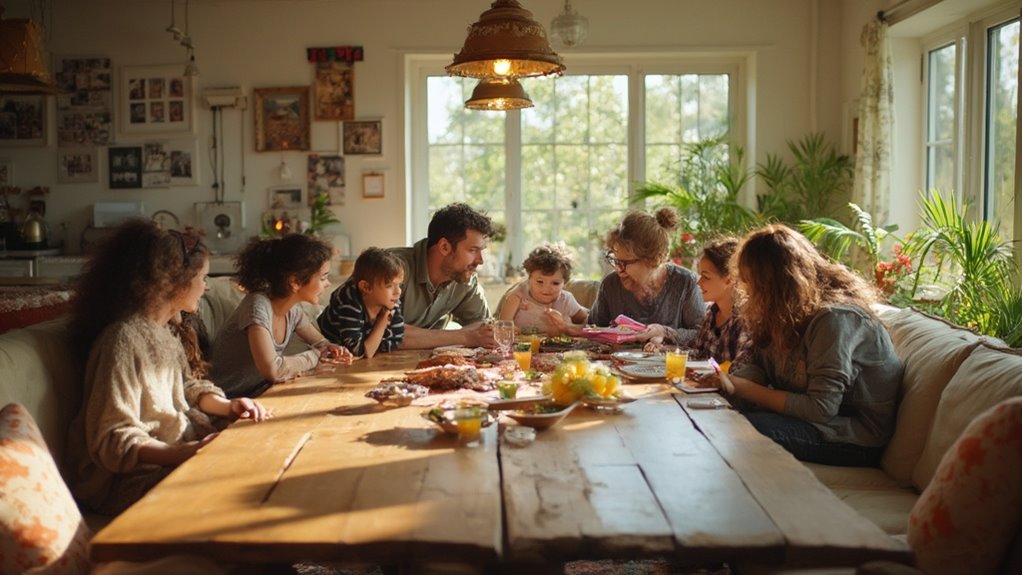
The trend of young adults living at home has surged dramatically in recent years, particularly highlighted by the COVID-19 pandemic. A staggering 52% of adults aged 18 to 29 reported residing with their parents as the virus reshaped living dynamics. This phenomenon reflects not only economic challenges but also a shift in relationship values, as families seek connection during uncertain times.
Many young adults, facing job instability and rising costs, find comfort and support in their family units. This arrangement fosters a sense of belonging, allowing for shared responsibilities and sentimental reinforcement. As societal norms evolve, the rise of young adults living at home signifies a deeper redefinition of family life, emphasizing unity amidst adversity.
Notably, the increase in young adults living with parents has reached the highest recorded share since the Great Depression. This shift in living arrangements is part of a broader trend, with multi-generational households in the U.S. growing to approximately 51.4 million Americans currently living in such arrangements.
The Role of Housing Affordability in Multi-generational Households
As housing affordability continues to decline across Florida, many families are turning to multi-generational living arrangements as a practical solution. Rising costs’ financial pressures compel families to share living spaces, alleviating economic burdens. Notably, over 20% of young adults live with their parents, underscoring the shift towards multi-generational living.
This trend is further driven by the median home price in Florida, which has made homeownership increasingly challenging for many families.
| Factor | Impact on Multi-generational Living |
|---|---|
| Rising Housing Costs | Over 20% of young adults live with parents |
| High Income Percentage on Housing | 30%+ of income spent leads to shared homes |
| Economic Pressure Post-Pandemic | 60%+ of Gen Z/millennials moved back home |
| Demand for ADUs | Affordable solutions to reduce living costs |
These arrangements not only foster familial bonds but also provide a strategic response to the escalating cost of living, reflecting a growing trend towards shared economic responsibility.
Cultural Influences on Multi-generational Living Arrangements
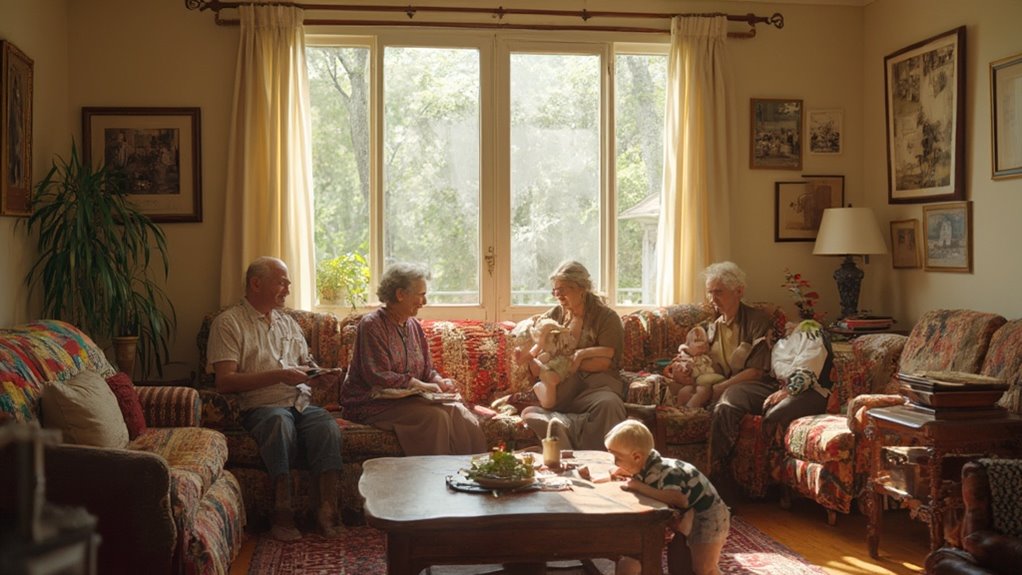
Multi-generational living arrangements in Florida are increasingly influenced by a variety of cultural factors that shape family structures and dynamics. Traditional practices from Asian, African, and Mediterranean cultures emphasize extended family bonds and shared responsibilities, often seen in active grandparent roles in childcare. In the U.S., Latino communities maintain these norms, with a significant percentage of families opting for multi-generational living due to economic and sentimental ties.
Immigrant families frequently bring collectivist traditions, blending them with modern U.S. life. As housing costs rise, Western attitudes towards independence are shifting, with younger generations embracing close family ties. This cultural evolution reflects a desire for connection, adaptability, and the preservation of heritage, enriching the landscape of American family life in Florida.
Additionally, first-time homebuyer programs are increasingly being utilized by families seeking to create suitable living spaces that accommodate their multi-generational needs.
Benefits of Multi-generational Living for Families
While many families seek independence, the benefits of multi-generational living arrangements have become increasingly evident in Florida. Sharing living spaces offers families financial advantages, psychological support, and improved health outcomes. Cost sharing reduces expenses, while built-in childcare and mutual elder care improve caregiving.
Furthermore, psychological connections fostered within these households lead to stronger family bonds and decreased loneliness. Additionally, families can explore affordable housing options that cater to their unique needs and budgets.
| Benefit Type | Specific Benefits | Impact on Families |
|---|---|---|
| Financial Advantages | Cost sharing, pooled income | Reduced living expenses |
| Caregiving Support | Built-in childcare, mutual elder care | Improved caregiving efficiency |
| Psychological Benefits | Reduced loneliness, stronger bonds | Improved mental health |
| Health & Wellbeing | Chronic illness management | Better health outcomes for all |
| Family Bond Strengthening | Intergenerational mentorship | Legacy preservation |
Challenges Faced by Multi-generational Households
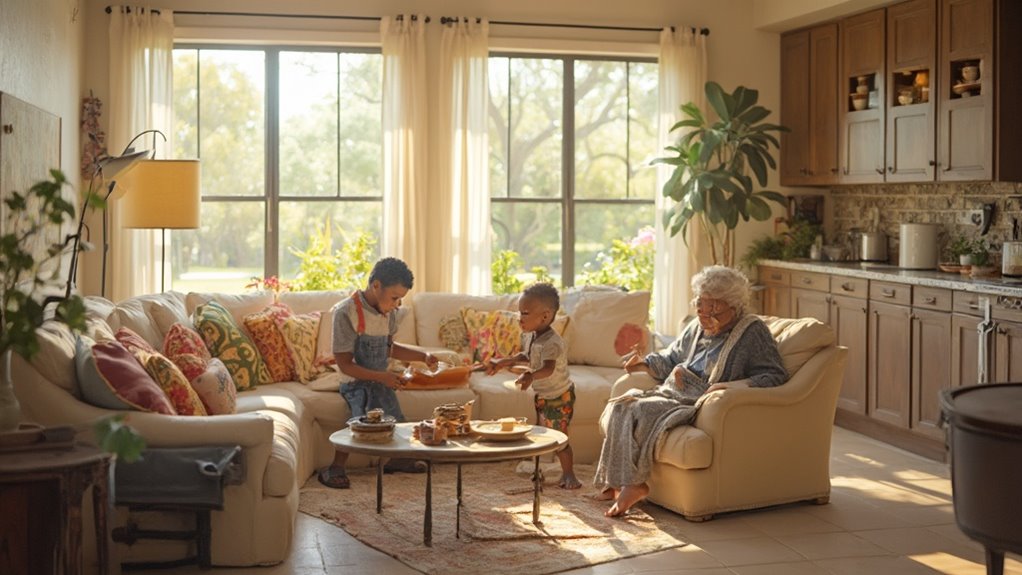
The rise in multi-generational living arrangements has illuminated not only the benefits but also the challenges that families face in Florida. These households often grapple with privacy and space constraints, leading to conflicts over shared areas and routines. Additionally, generational differences can create communication gaps, making it challenging to resolve everyday disagreements.
- Overcrowding results in resource strain, especially during peak hours.
- Clashing values and lifestyles lead to misunderstandings and resentment.
- Economic pressures from rising housing costs and shared responsibilities further complicate dynamics. Furthermore, the increasing trend of multi-generational living emphasizes the importance of community support across generations, as families seek to balance their diverse needs.
As families navigate these challenges, the quest for harmony and belonging remains central to their experience, highlighting the need for understanding and adaptability within these shared living environments.
Redefining Living Spaces: Design and Layout Considerations
As families increasingly adopt shared living arrangements, thoughtful design and layout considerations become essential in creating harmonious and functional spaces. Open-concept floor plans promote togetherness, while flexible furniture adapts to diverse needs, fostering interaction in communal areas. Private zones, such as split-bedroom layouts and in-law suites, offer necessary autonomy and noise reduction, catering to varying age groups—accessibility features, including wheelchair-friendly modifications and safety installations, guarantee comfort for all residents.
The integration of technology improves convenience and safety, enabling seamless communication and efficient home management. Ultimately, the blend of shared and private spaces, alongside adaptable designs, allows families to cultivate a sense of belonging, where personal needs and communal bonds coexist beautifully. Moreover, the community’s commitment to environmental sustainability ensures that homes are not only functional but also environmentally conscious.
The Future of Housing: Trends in Multi-generational Homes
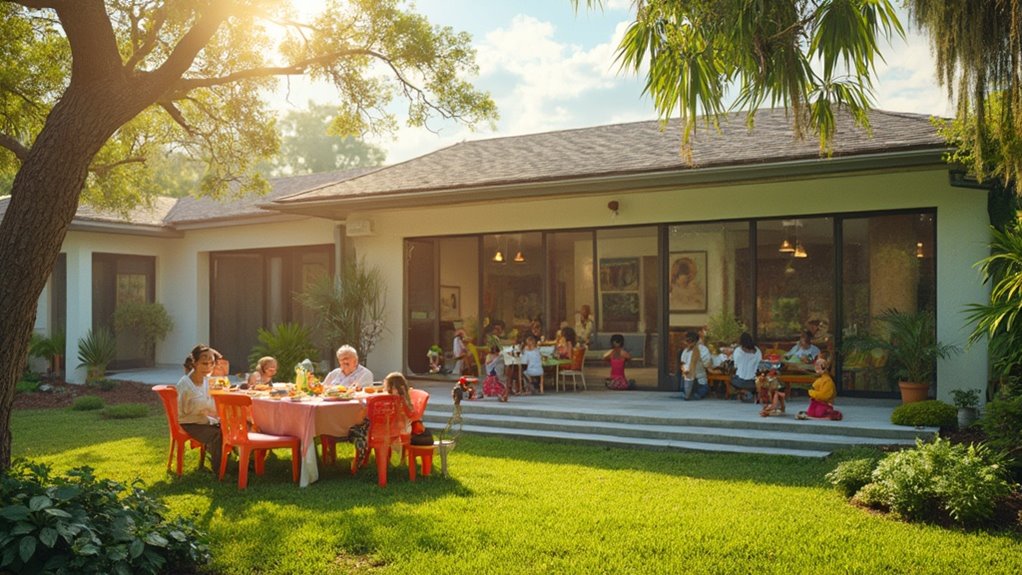
Emerging trends in multi-generational homes reflect a significant shift in housing dynamics, driven by demographic changes and economic pressures. As families adapt to these shifts, several key factors are shaping the future of housing.
- Aging Population: By 2034, older adults are projected to outnumber children, increasing the demand for age-in-place solutions.
- Economic Pressures: Housing affordability issues necessitate resource pooling among generations, as costs consume a more significant portion of income.
- Design Innovations: Homes are evolving with flexible layouts and separate living zones, promoting both independence and connection. Additionally, understanding Florida’s real estate market can help families navigate housing options that best suit their multi-generational needs.
These trends highlight a growing acceptance of multi-generational living, emphasizing the importance of shared spaces that foster belonging while accommodating diverse family needs.
Case Studies: Successful Multi-generational Living in Florida
While traditional family structures evolve, successful case studies of multi-generational living in Florida illustrate groundbreaking approaches that foster community connections and adaptability. In Dunedin, intergenerational programs promote collaboration through initiatives like the Youth Advisory Board, while Orlando’s cutting-edge home designs integrate flexible spaces and innovative technologies tailored for all ages. Additionally, communities like Star Farms in Lakewood Ranch highlight builder-led developments emphasizing shared living areas and amenities that encourage interaction.
Economic pressures have also led many young adults to reside with their parents, further solidifying these living arrangements. Together, these examples showcase a cultural shift towards multi-generational living, where shared spaces and communal activities improve family bonds and promote a sense of belonging in diverse communities. Furthermore, Lakewood Ranch’s vibrant community offers a rich history and culture that enhances the multi-generational living experience.
Frequently Asked Questions
What Are the Tax Implications of Living in a Multi-generational Household?
Living in a multi-generational household offers significant tax benefits, including dependent claims, tax credits, and pooled resources. Families can also utilize tax-advantaged accounts, enhancing financial stability while managing diverse tax implications effectively across generations.
How Can Families Negotiate Shared Responsibilities in Multi-generational Homes?
Negotiating shared responsibilities in multi-generational homes often involves strategic task delegation, transparent financial plans, and regular family meetings. These practices promote equity, improve collaboration, and foster a supportive environment, ultimately strengthening familial bonds and personal well-being.
What Are the Legal Considerations for Multi-generational Living Arrangements?
Legal considerations for multi-generational living arrangements include co-ownership structures, formal agreements for expense-sharing and maintenance, estate planning for equitable asset distribution, and precise documentation to prevent conflicts and guarantee smooth changes among family members.
How Does Multi-generational Living Affect Family Relationships Over Time?
Multi-generational living positively influences family relationships over time, fostering sentimental support and shared responsibilities. This arrangement often boosts bonds, with families steering through obstacles together, ultimately leading to improved communication, resilience, and a more profound sense of belonging.
How Do Multi-generational Homes Impact Privacy for Florida Families?
While privacy can be a concern in multi-generational homes, thoughtful design elements such as separate entrances, individual living spaces, and soundproof walls can provide families with the personal space they need while maintaining close connections.
Are There Financial Incentives for Building Multi-generational Homes?
Financial incentives for building multi-generational homes include tax credits, grants, and zoning adjustments. These initiatives aim to reduce personal financial burdens, promote affordable housing, and encourage community integration, fostering stronger family connections and shared resources.
Conclusion
The rise of multi-generational homes in Florida reflects evolving family dynamics influenced by economic pressures and cultural shifts. A recent study indicates that approximately 25% of young adults aged 18 to 34 are living with their parents, a substantial increase from previous years. This trend not only highlights the necessity for affordable housing but also underscores the importance of designing versatile living spaces that accommodate diverse family needs, ultimately shaping the future of residential architecture in the state.
References
- https://members.tbba.net/blog/tbba-blog-5411/post/florida-s-multigenerational-living-a-growing-trend-in-family-housing-38528
- https://www.jacksonvillemag.com/2019/07/19/multigenerational-homes-jacksonville/
- https://www.bluezones.com/2019/07/multigenerational-living-is-the-new-rapidly-growing-trend/
- https://www.pewresearch.org/social-trends/2014/07/17/the-growth-in-multi-generational-family-households/
- https://www.businessinsider.com/the-states-with-the-most-multigenerational-households-2020-4
- https://blog.icihomes.com/2016/08/24/the-rise-of-multi-generational-homes/
- https://globalfloridarealty.com/multi-generational-homes-in-orlando-family-living-spaces/
- https://epe.lac-bac.gc.ca/100/201/300/review_european_studies/2021/RES-V13N2-All.pdf
- https://www.geniushigh.com/sociology-essay/impact-of-economics-on-family-dynamics
- https://pmc.ncbi.nlm.nih.gov/articles/PMC4742411/

